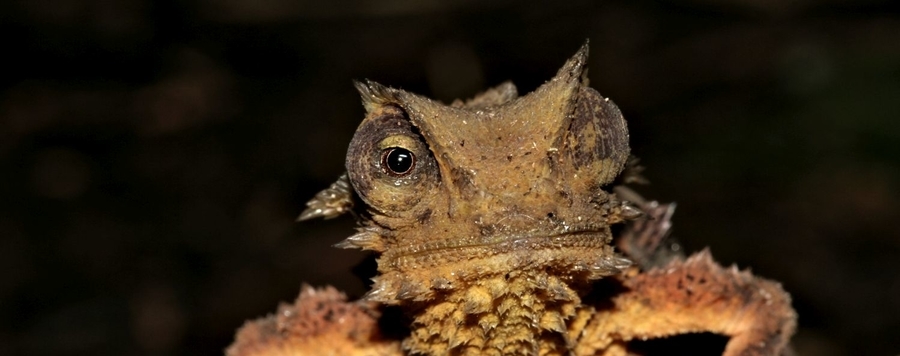
Chameleons armored with skin and bone Printer-friendly version
(Bonn, 26.05. 2020) Scientists from Bonn, in collaboration with colleagues from Munich, Cologne and Bremen, discovered peculiar spiny bones in the skin of a Malagasy leaf chameleon. These bones grow within the skin along the animal‘s flanks and legs and are assumed to spoil the appetite of predators. The results are now published in the "Journal of Morphology".
"When it comes to chameleons, most people think of the splendid play of colors that is related to intraspecific communication or camouflage", says Dr. Markus Lambertz, zoologist at the Rheinische Friedrich-Wilhelms-Universität Bonn (University of Bonn, Germany) and the Zoologisches Forschungsmuseum Alexander Koenig – Leibniz-Institut für Biodiversität der Tiere (ZFMK, Museum Koenig). Madagascar, however, harbors species that follow a quite different strategy. Many leaf chamelons of the genus Brookesia are small and brownish animals that live cryptic in the understorey. They possess a modified vertebral column that is reminiscent of a saw and supposedly a protective measure against predators. These structres are especially pronounced in the Antsingy leaf chameleon Brookesia perarmata, which also stands out due to its heavily sculptured head and thorny projections along the flanks and legs. "We know this species with its bizarre thorny armor for almost a century, but it remained shrouded in mystery what these structures truly are", says Dr. Frank Glaw from the Zoologische Staatssammlung in Munich.






